Bradford is home to the second oldest photographic society in the world (Leeds has the oldest) and to a club founded by cycling enthusiasts in the 1930s—both still going strong today. This year, we are proud to host the 2021 Yorkshire Photographic Union Annual Exhibition in Bradford at the National Science and Media Museum.
In the beginning there was the Bradford Photographic Society
Like many things in Bradford, the history of photography in the city has links with the wool trade. Photography was not a cheap hobby in the 19th century. It was new, experimental and equipment was made by hand, often by craftsmen working to the photographers’ own deisgns. Bradford was a rich city thanks to its role in the textile industry, and in 1860 Bradford Photographic Society (BPS) was formed by 17 wealthy mill owners.
Early meetings were held in St George’s Hall and focused on the technical aspects of the different photographic processes its members were using. Talks given at some of the early meetings included Mr W.H. Leather’s explanation of ‘The Waxed Paper Process’ and ‘Comments on the Tannin Process, and a Display of Failures’ by Mr Nichols. Society meetings were a vital source of information and support at a time when photography was very much DIY rather than an off-the-shelf hobby.
The birth of the Yorkshire Photographic Union
In 1898, the BPS organised one of the first exhibitions of Pictorial photography¹ in the world at the old Municipal Art Gallery in Bradford. Although publicised as the first exhibition of its kind, there had been earlier UK exhibitions in Liverpool (1891) and Manchester (1898). The Bradford exhibition ran from Saturday 27 November 1898 to Sunday 15 January 1899 and was organised by a committee drawn from 23 photographic societies across Yorkshire. At that time 27 of the UK’s 248 photographic societies were based in Yorkshire, and with 190 members Bradford’s was the largest.
It was partly the success of the Bradford exhibition that led to the formation of the Yorkshire Photographic Society (YPU), a ‘society of societies’ that brough together clubs from across the county for regular meetings, excursions and competitions.
“Members of scattered and isolated societies in various parts of Yorkshire organised excursions to the Exhibition and for the first time had opportunities of making one another’s acquaintance. In this way they came to realise that mutual benefit and advantage would result from the formation of a Union of Yorkshire Photographic Societies for the interchange of ideas, lectures, folios, lantern slides and various means of social intercourse.”
—YPU Bulletin
A proposal for a Union of Yorkshire Photographic Societies was put forward by a small committee, headed by Ezra Clough, the BPS Secretary. A meeting to discuss the proposal was held at Bradford Grammar School, headquarters of the BPS, on Friday 27 January 1899. It was attended by around 40 men from 13 societies (women were not admitted to the Society for many years), who approved the idea.²
Bradford’s formative role in the YPU is clear from the Union’s first appointments, with Ezra Clough (BPS Secretary) becoming YPU Secretary, Alexander Keighley (BPS Treasurer) taking the role of YPU Treasurer and Percy Lund (BPS President) becoming the YPU’s first President.
Some notable BPS Presidents
The First: John Venimore Godwin
BPS President 1860–61

The first BPS President, Godwin only held the post for a year between 1860 and 1861, probably because of his political ambitions—he became Mayor of Bradford in 1865 and his son, John Arthur Godwin, was later the first Lord Mayor of Bradford. Godwin Street, which runs in front of the National Science and Media Museum, is named after him and is the site of other key moments in Bradford’s photographic past (more of which later).
The Famous: Alexander Keighley
BPS President 1898–99
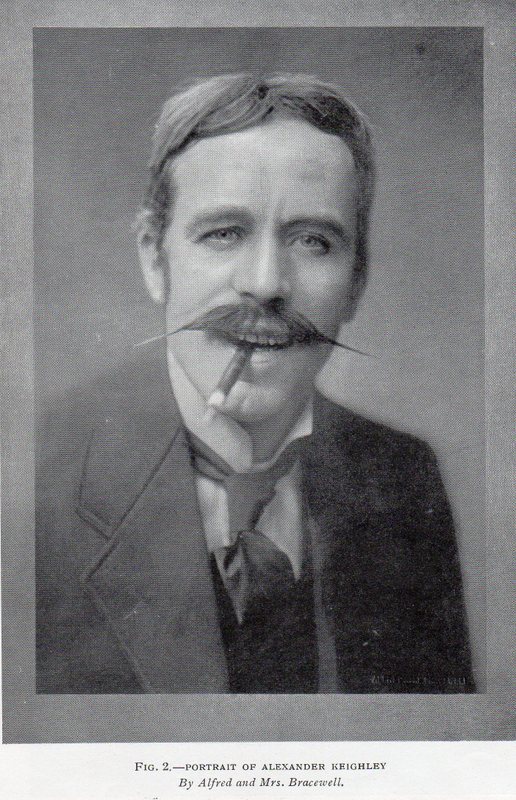
Alexander Keighley (pronounced ‘Kee-lee’ not ‘Keith-ley’) was both President of the BPS and of the Keighley (pronounced ‘Keith-ley’ not ‘Kee-lee’) and District Photographic Association. He was a renowned photographer who was committed to supporting the development of amateur photography clubs. He later became one of the most revered Presidents the Yorkshire Photographic Union ever had, holding the post from 1910 to 1913, and again from 1920 until his death in 1947.
Born into a wealthy family of textile merchants, Keighley had the financial means to pursue his interests in both photography and world travel. He went on at least one international trip every year and his camera went with him—often wrapped in brown paper so that he could take photographs unnoticed. Thankfully, his ‘impressionistic’ style of pictorial photography relied on capturing the sense of a scene rather than creating a detailed record, so it wasn’t too much of a problem when the paper around his camera interfered with focusing.
We care for 90 of his photographs at the National Science and Media Museum.
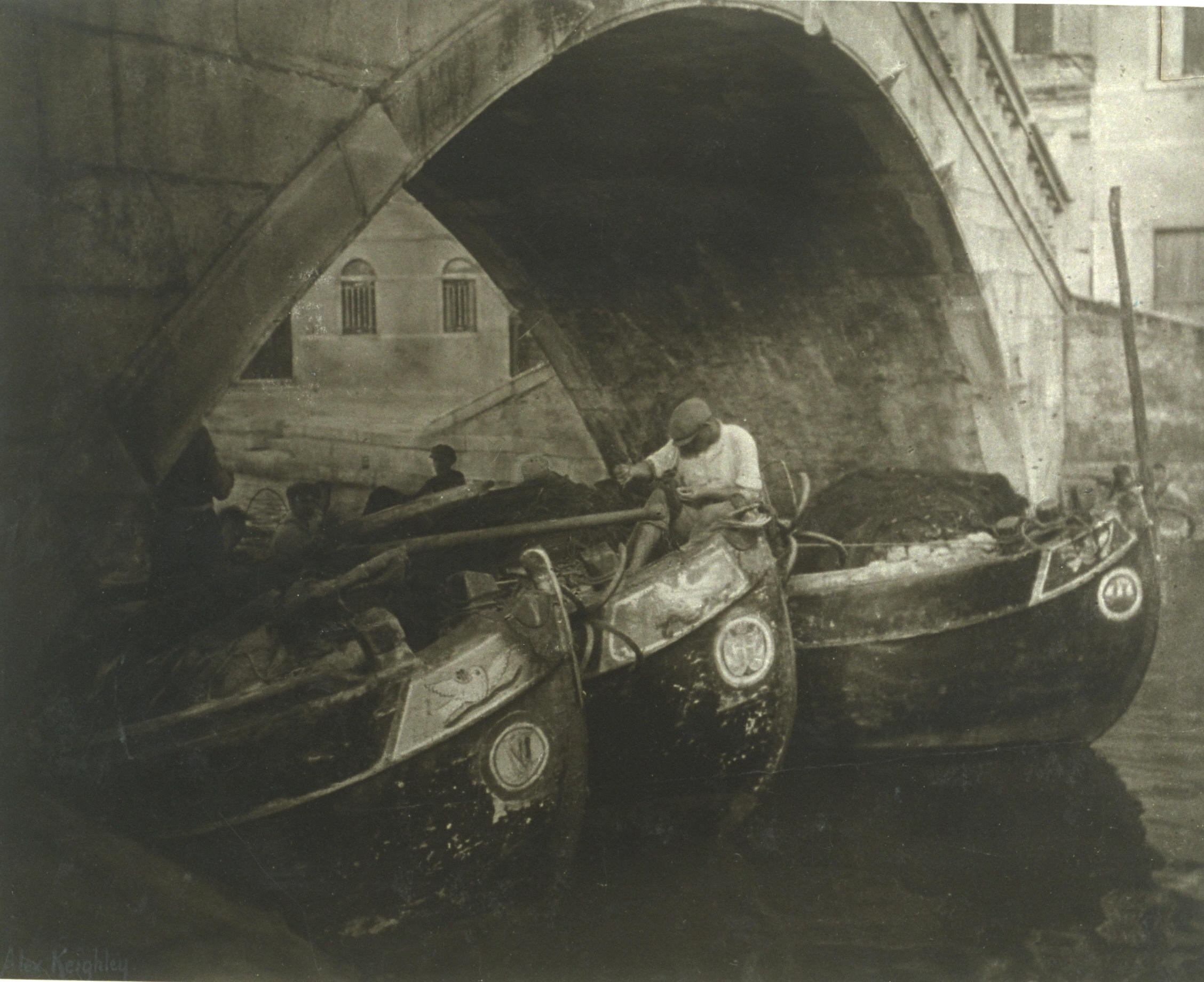
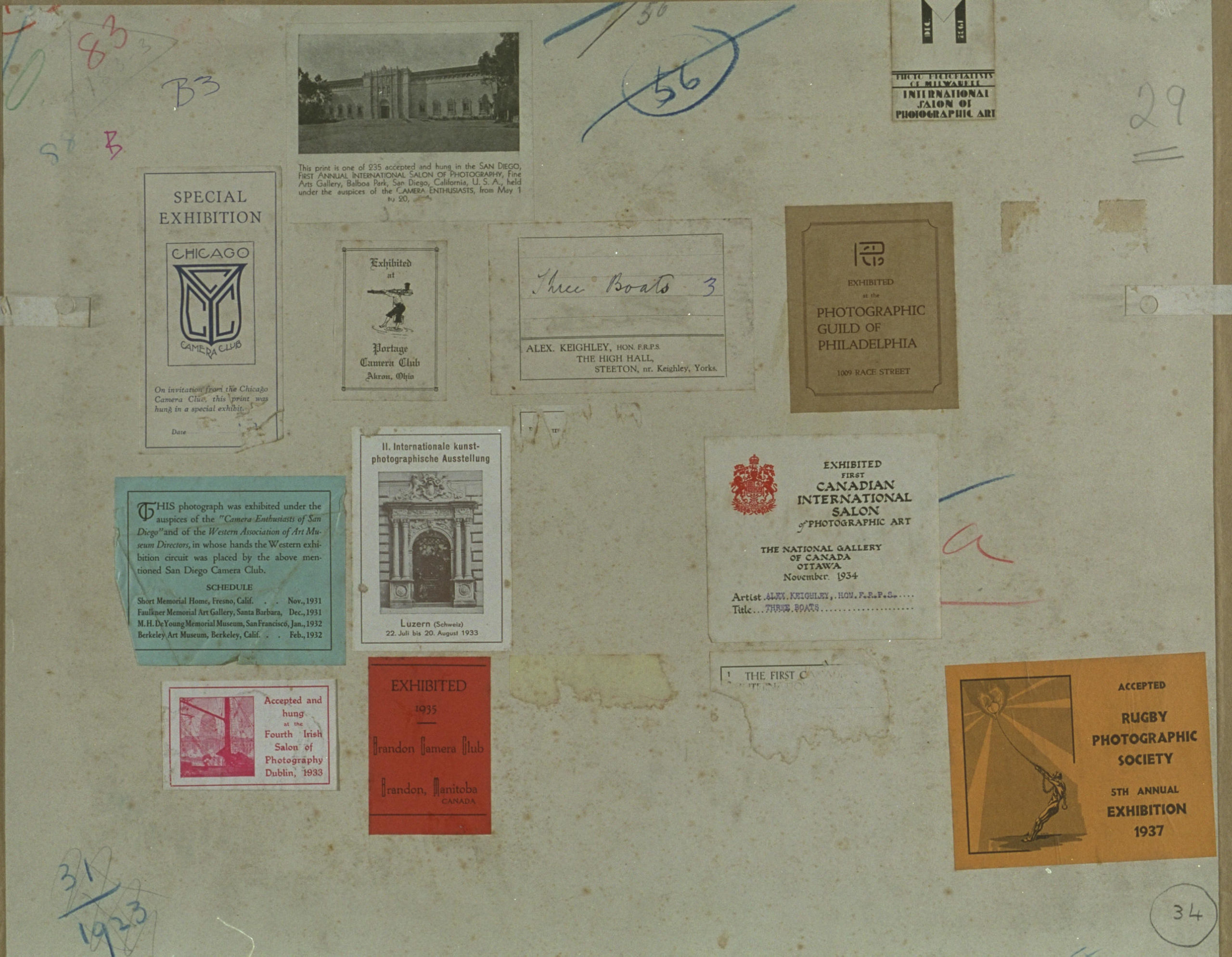
The back of this photograph reveals how often Keighley entered his work into competition, with stamps from events across the UK, American, Canada and Switzerland.
The Publisher: Percy Lund
BPS President 1899–unknown

The next BPS President after Keighley, Percy Lund was also the first President of the YPU and an influential figure in the world of photography and publishing.
In 1886 his publishing and photographic wholesale company moved from Ilkley to Bradford. They kept a ‘large stock of every photographic requisite’ and produced a regular mail order catalogue for international orders. The same year that the company moved to Bradford, Lund produced The Photographers World, which was the only trade journal for photographers at the time. Published monthly, it contained articles, information about the latest photographic patents, advertisements for photographic equipment, and a competition with medals awarded for the best photographs. Over 5,000 copies were sent free of charge to photographers and dealers all around the world.
In 1890 Lund’s company began publishing The Practical and Junior Photographer for worldwide distribution, which eventually became Practical Photographer.
Then came the BCC
Bradford Photographic Society was founded on wool trade wealth, but the origins of the Bradford Camera Club are a little more unorthodox.
In the 1930s there was a boom in cycling clubs. Cameras were fairly portable by this time and taking a Kodak in your kit bag to capture landscape and wildlife shots was popular. In 1932 Joseph and Mabel Bruce and other ‘cycling photographers’ tried to join Bradford Photographic Society, but were turned away, possibly due to snobbery.
Not to be put off, Joseph and Mabel went rogue and established the Cycle Photographers Folio Group, later renamed the Bradford Camera Club (BCC). The first club meetings were held at their home until membership grew and they moved to what was then Mitchell’s Cafe on Godwin Street (ironically, named after former BPS President John Venimore Godwin), followed by the Queen Hotel on Bridge Street which was demolished many years ago.
The BCC opened their first exhibition at Cartwright Hall on Saturday 2 September 1939—the day after the outbreak of the Second World War. Both the BPS and the BCC lost members to the armed services or war work during the conflict, but kept up activities as much as possible. Indeed, the BCC opened its own meeting rooms at St. John’s Chambers on Manchester Road in April 1944. The official opening was performed by Alexander Keighley who was then in his second, lengthy term as BPS President, who congratulated the members on embarking on the venture during wartime.
Sadly, the Manchester Road premises were demolished in the post-war redevelopment of Bradford, leading to another series of short-lived moves for the BCC.
The Bradford Camera Exchange
A few years before the war, members of the BPS and BCC joined forces on a new photographic venture.
In 1936, Alfred Greenwood (twice President of the BPS) and Joseph Bruce (cycling photographer and co-founder of BCC) opened The Bradford Camera Exchange. Today, the camera shop on North Parade in Bradford is run by Alfred’s son, John, and is one of the UK’s longest established photographic retailers.


The original shop moved to Victoria Square (now Godwin Street) opposite the Alhambra theatre in 1937. Alfred’s son John began working at the shop in 1963, a year before it moved to its current location at the top of North Parade. John says:
“I have adverts going right back to the beginning and they are offering exactly the same sort of service as we do now which is basically dealing in new goods, taking things in part exchange, buying for cash, and selling on commission.”³
Even in the 1960s, a hundred years after the formation of the BPS, Bradford was a city that had a lot to offer amateur photographers.
“When I first started in 1963, at the age of 15, there must have been a minimum of 12 photographic outlets in Bradford. There were independent dealers like Eric’s, three department stores with photographic counters—Sunwin House, Brown Muffs and Busby’s—photographic chemists like Rimmington’s and Hazlehurst’s with proper photographic departments and various other camera shops. They’ve all gone and now there’s just us.”⁴
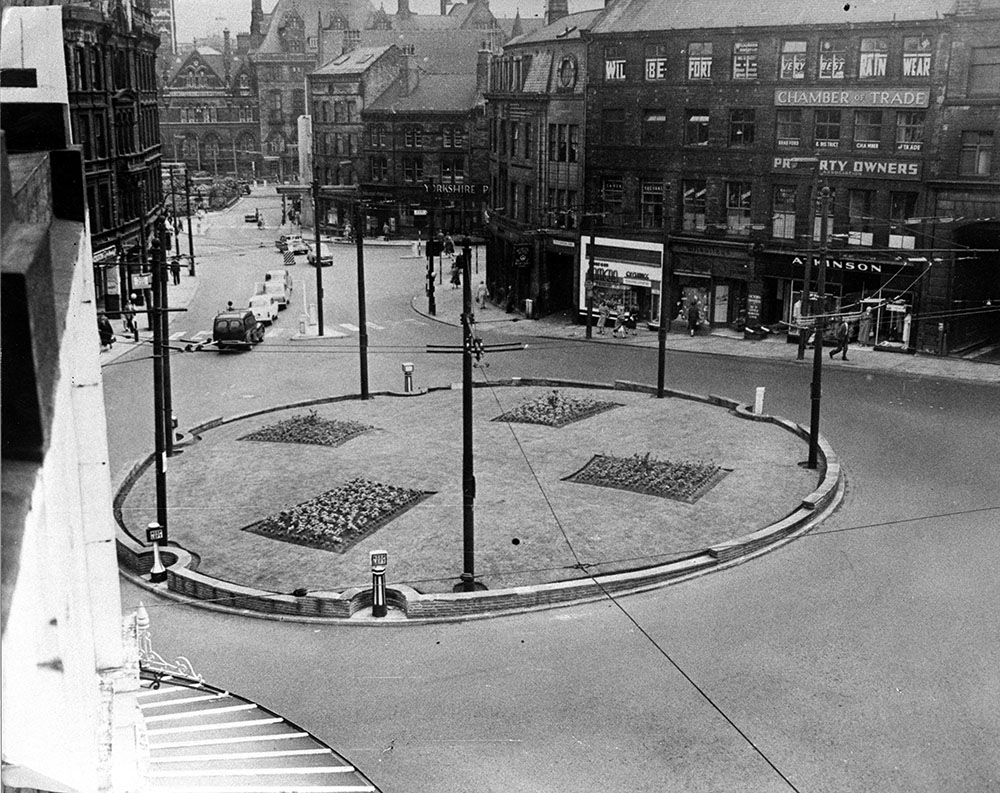
The Bradford Camera Exchange is the building with the white frontage on the other side of the roundabout. All the buildings in this photograph apart from the Alhambra and the Town Hall were demolished in the 1960s.
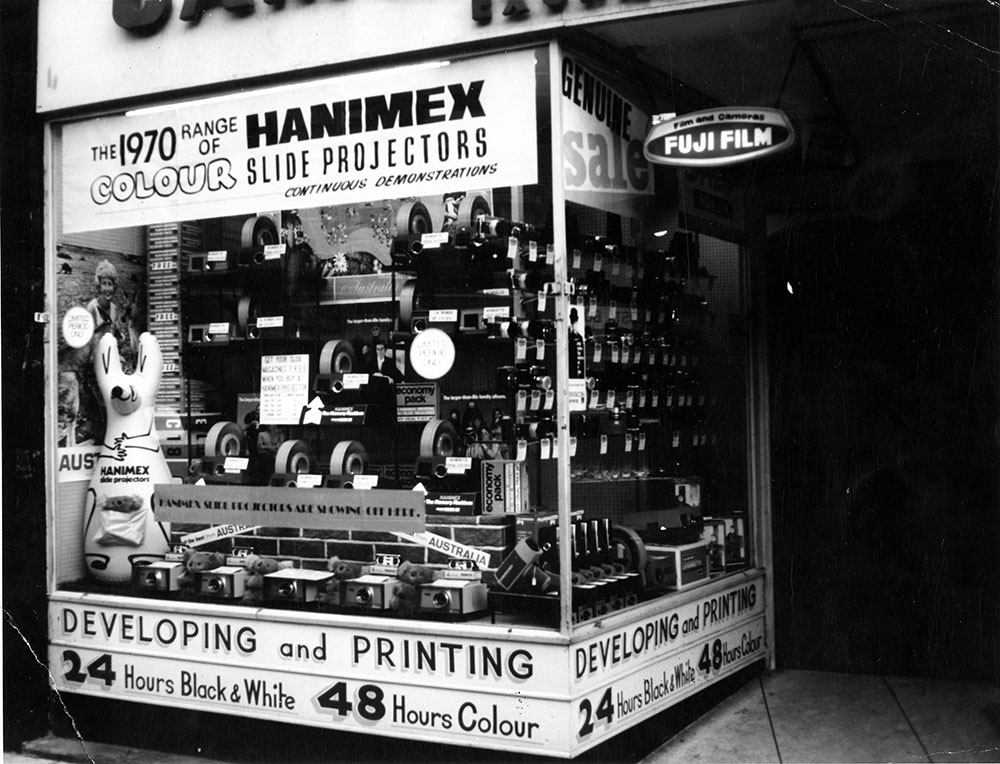
Today
Not only is the Bradford Camera Exchange still open for business, but both the BPS and BCC continue to welcome new members and hold regular meetings, although the format has changed quite radically over the last year, as BPS president Peter Sykes explains:
“Zoom has been a godsend by enabling club activities to continue through the pandemic, even allowing us to have speakers and judges from far and wide. However, it will never be the same as a chat over tea and biscuits and the chance to get hands-on advice face to face.”
Despite the pandemic, this year’s YPU Annual Exhibition has gone ahead in a digital-only format. Hosted by the BPS at the National Science and Media Museum, In Pursuit of Perfection: The Yorkshire Photographic Union Competition celebrates the skill and passion of amateur photographers across Yorkshire and features work from both Bradford clubs. The exhibition runs until 27 June 2021.
If you would like more information about the clubs’ activities and how to join, please visit the Bradford Photographic Society and Bradford Camera Club websites.
¹ Photography that emphasises the beauty of the subject, tonality and composition rather than creating a ‘straight’ record of a subject. Source: The history of photography in pictures, National Science and Media Museum
² The 12 founding YPU clubs were Batley, Beverley, Bradford, Brighouse, Halifax, Heckmondwike, Hull, Keighley, Leeds, Rodley, Sheffield and Wakefield. Five others joined later in 1899: Otley, Pudsey, Scarborough, Yeadon and District, and the Sheffield Optical Lantern Society. Today, the YPU is made up of 67 clubs.
³ Source: IN FOCUS: Behind the scenes at long-standing Bradford retailer, Telegraph & Argus, 14 August 2020
⁴ Source as above
I have some newspaper cuttings, found in an old box of my mother’s, from the telegraph and Argus circa 1930 regarding the Bradford Photographic society. I can forward photos of them to you if you wish.
My father’s father was William Henry Hammond, 1871-1941 and he was a past president of the BPS. I have quite a few portraits of my parents about the time of their marriage in 1927.
Hi… not quite the second oldest…
c.August 1852 – Leeds Photographic Society (closed in the 1860s, reconstituted c1881-82)
20 Jan 1853 – Photographic Society of London
1853 – Liverpool Photographic Society
1854 – Photographic Society of Ireland
1855 – Manchester Photographic Society
1858 – Paisley Photographic Society
1860 – Bradford Photographic Society
1861 – Edinburgh Photographic Society
Some early societies closed and were then re-established.